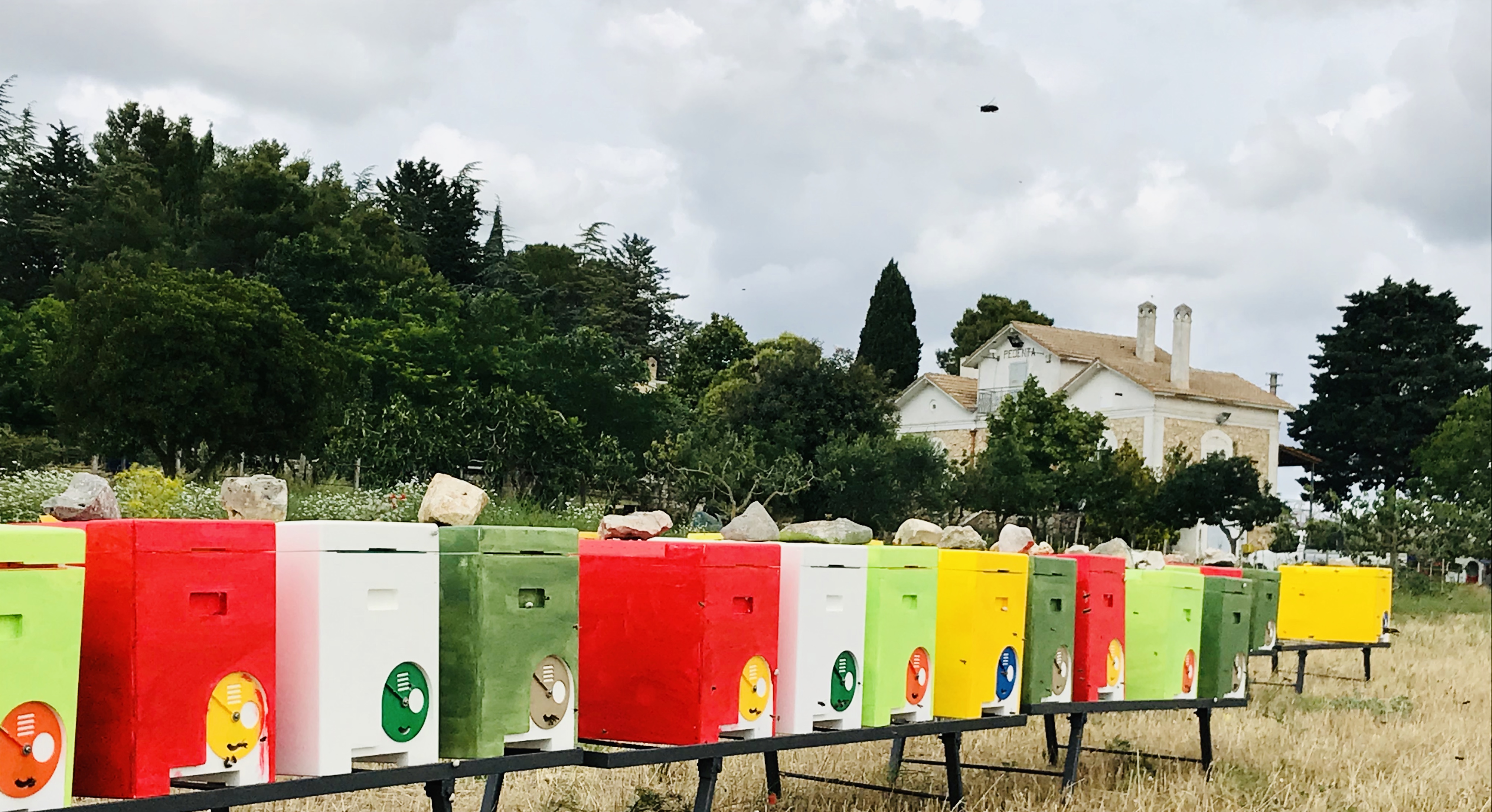
In our multifunctional farm we try to find inspiration for the various educational workshops, from what we have around us. The month of June which marks the transition from spring to summer, and gives all the beautiful new colors to Masseria Redenta. In such period, we have created a laboratory on the colors of bees. You might not know, but bees do not see colors like humans: they confuse black with red (they do not visit flowers of this color), they do not distinguish between the yellow, red-orange and yellowish-green; they also confuse purple red with violet. Bees in fact only see four colors: yellow (orange, yellowish green) bluish green, blue and ultraviolet.
In many respects the bee’s eye is therefore superior to that of humans, because it perceives ultraviolet rays as special colors, rays whose existence in sunlight we are also aware of by spectroscopy.
The perception of colors in bees is closely linked to the pollination of plants with flowers; the latter in fact, have developed throughout millennia of evolution the ability to advertise their “merchandise” and attract small insects. The flowers, although we humans cannot see it, have petals arranged on surfaces highly reflective of ultraviolet light and often have designs or various geometric patterns that attract bees to the nectar, like an airstrip that leads to the center of the flower, impossible for the bees not to notice them.
Thus, each flower also has its own particular reflecting surface in diversification from all the other species in order to facilitate selective reception and pollination.
Wouldn’t it be nice then, to see all the essential colors of our life too – as bees do?


